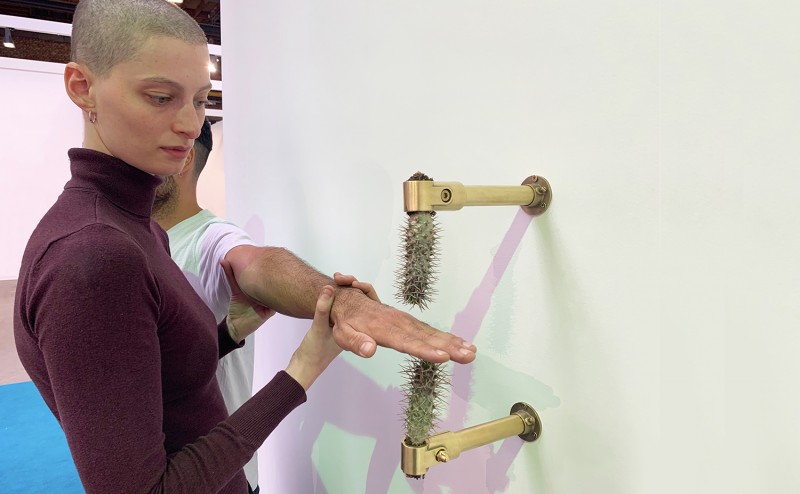
The Space In-Between creates a sense of the neverending balancing act that all who cross borders have with the sharp ends of authority. In effect, the constant tension in this work is equivalent to a mental state that is tasked with code switching while it must give away nothing; no sense of effort or labor.

The Space In-Between, 2019, 2-part, sculpture: cacti, brass, earth, 15 × 1.5 × 8 in | 38 × 4 × 22 cm

The Space In-Between, 2018, archival print, text card, 19 × 11.5 in | 48 × 29 cm

Performance at The Performance Show, Curated by: Zippora Elders
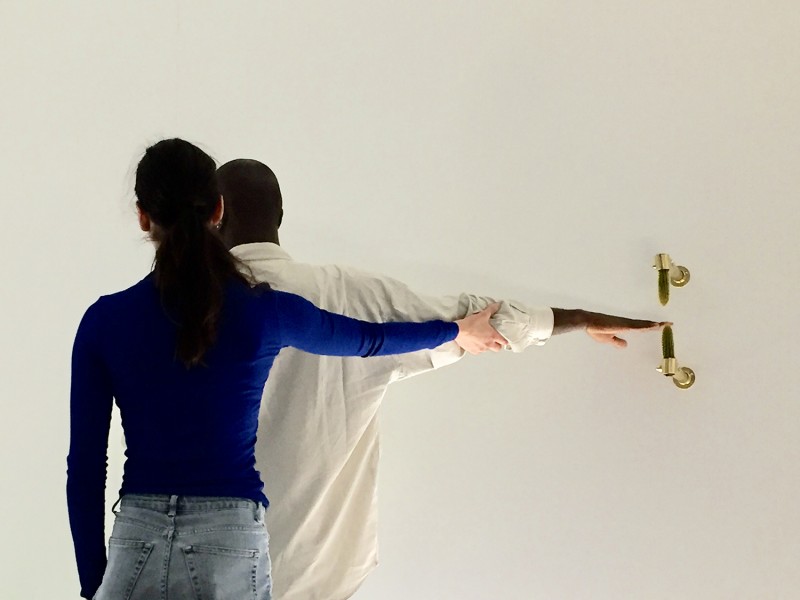
Performance at The Performance Show, Curated by: Zippora Elders
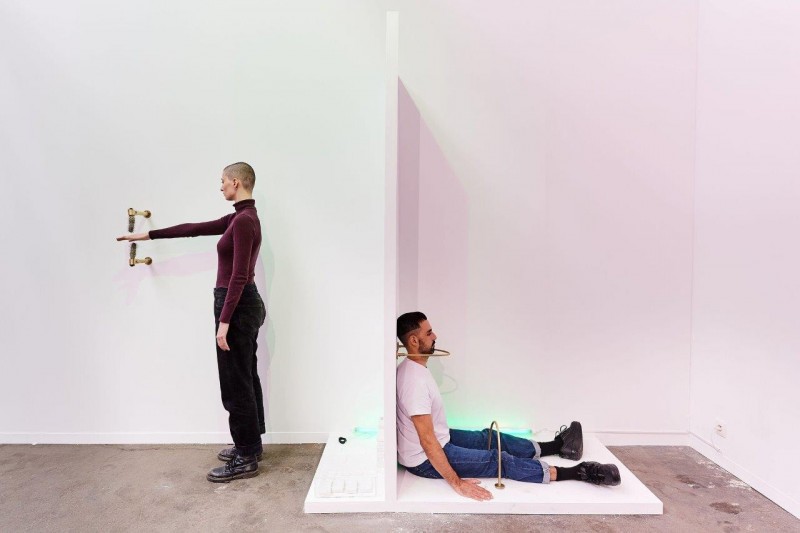
Performance at Art Brussels, Belgium, 2019

The fingerprint taken at a border has a hint of criminality built into the process of identification. This constant suspicion of the individual is highlighted in Monosov’s presentation of Fingerprint. Held by the neck and around the knee, the mobility of the body is challenged while an imprint equivalent in uniqueness and wonder to those found in imposing geological formations is taken as a form of intrusion and control.
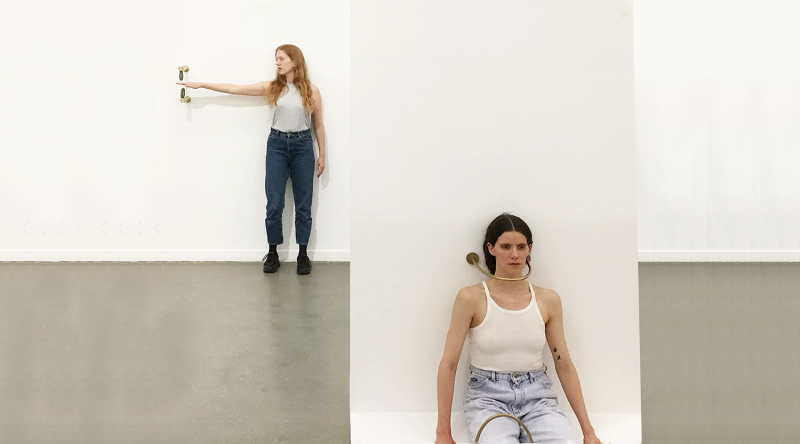
Performance at Kunsthaus Hamburg, Germany, 2019
Performers Rachell Bo Clark and Brogaard Camilla
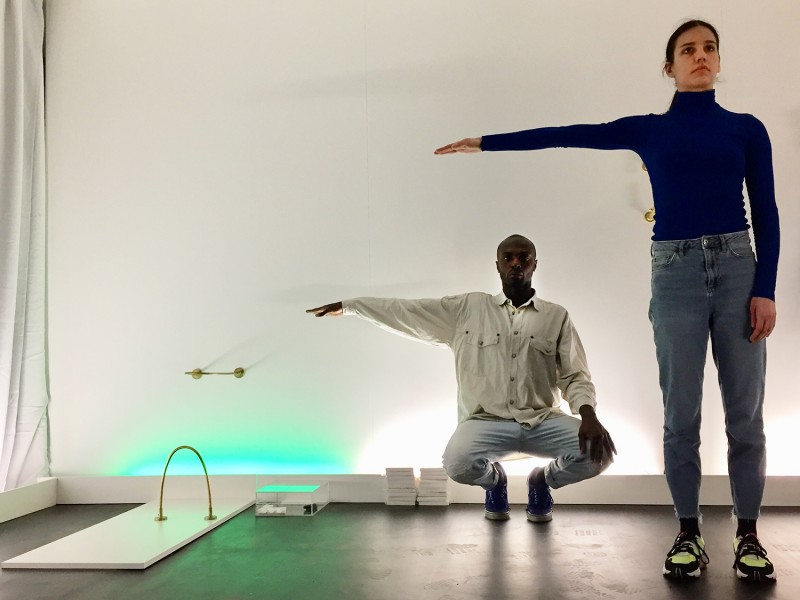
Performance at The Performance Show, Curated by: Zippora Elders
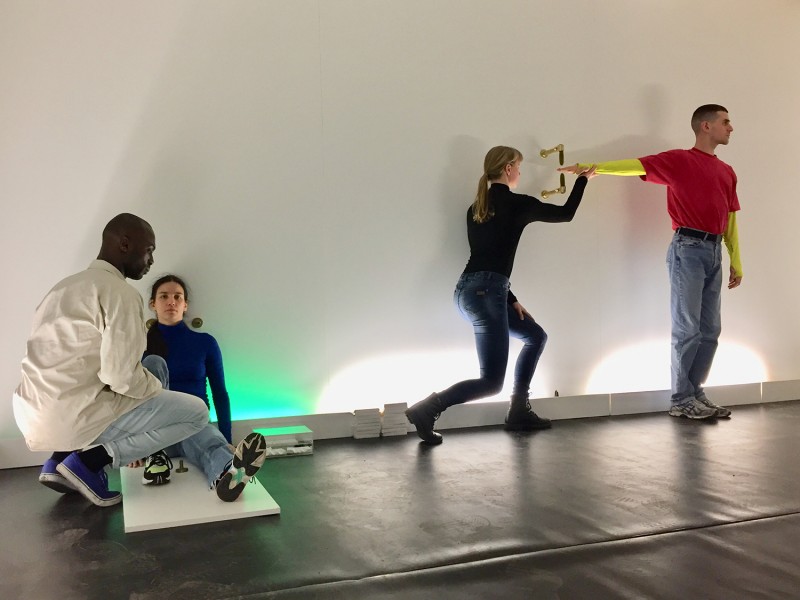
Performance at The Performance Show, Curated by: Zippora Elders

If the only important rule is to love/reduce suffering/cause no harm, of one’s neighbor, then one MUST allow for the freedom of their neighbor. A free neighbor is the only type of neighbor that is not a prisoner.
The Waiting Room is a metal fencing enclosure – allowing a mental or physical occupation of the space within. The fencing could be transgressed, but the weight of culture seems to make the actors obedient. Through its title, Monosov reflects on “waiting” as an existential state of existence.

Performance at Kunsthaus Hamburg, Germany, 2019
Performers Rachell Bo Clark and Brogaard Camilla

Waiting Room, 2018, archival print, text card, 27 × 14 in | 69 × 35 cm
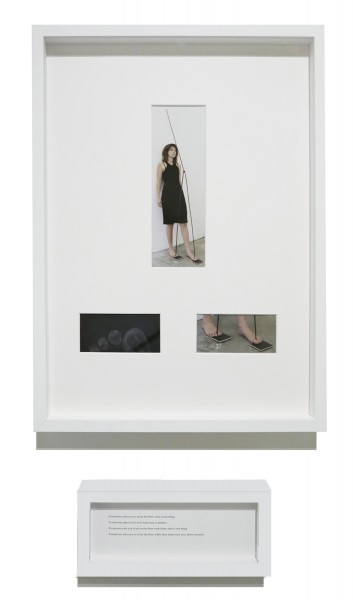
Forced, 2018, archival print, text card, 25 × 13 in | 66 × 34 cm

If someone asks you to sit on the floor, that is one thing
If someone asks to feel your body that is another
If a person asks you to sit on the floor with them, that is one thing
If someone asks you to sit on the floor while they stand over you, that is another
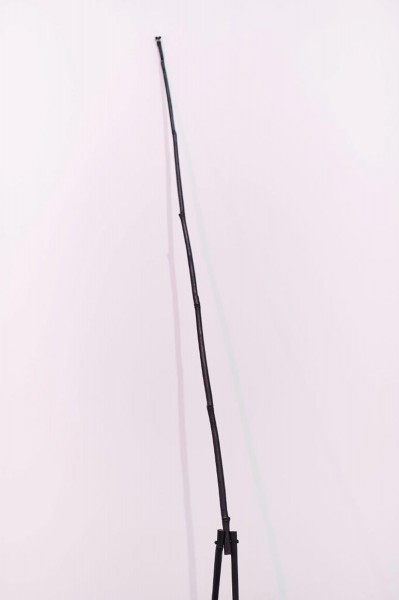
Forced, 2018 (detail)

Welcome Gift, 2018, bronze, 6 × 1.5 × 1.4 in | 17 × 4 × 4 cm
Inscribed in Russian are the words: “My first banana, 1991,” referencing the first banana Monosov tasted upon immigrating to Israel from her native home Russia.
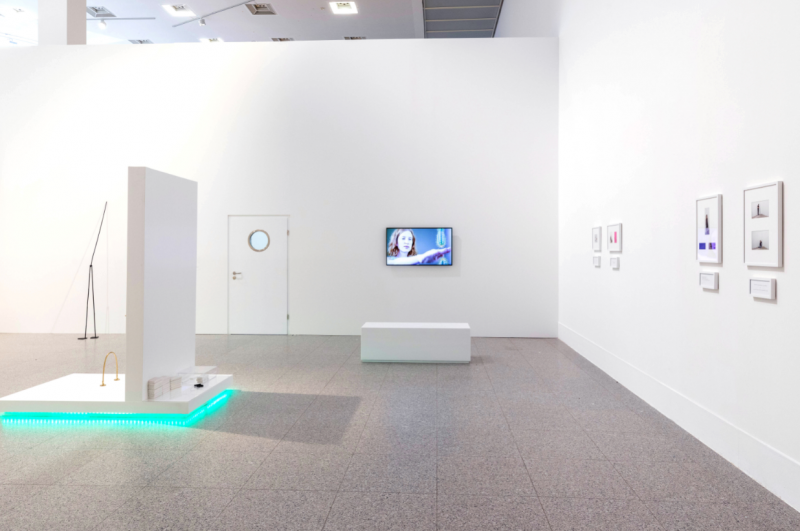
Installation at State of the arts, 2020, Bundeskunsthall, Bonn, Germany (photo courtesy of Bundeskunsthall)
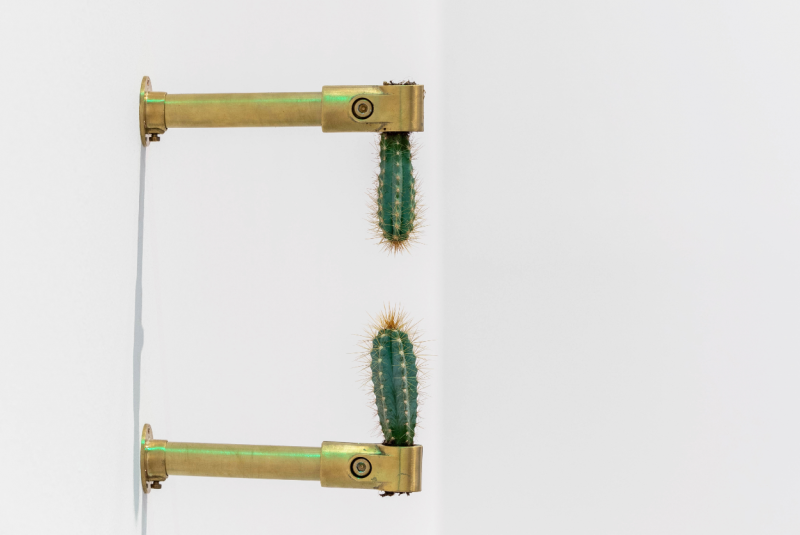
The Space In-Between, 2020, Bundeskunsthall, Bonn, Germany (photo courtesy of Bundeskunsthall)
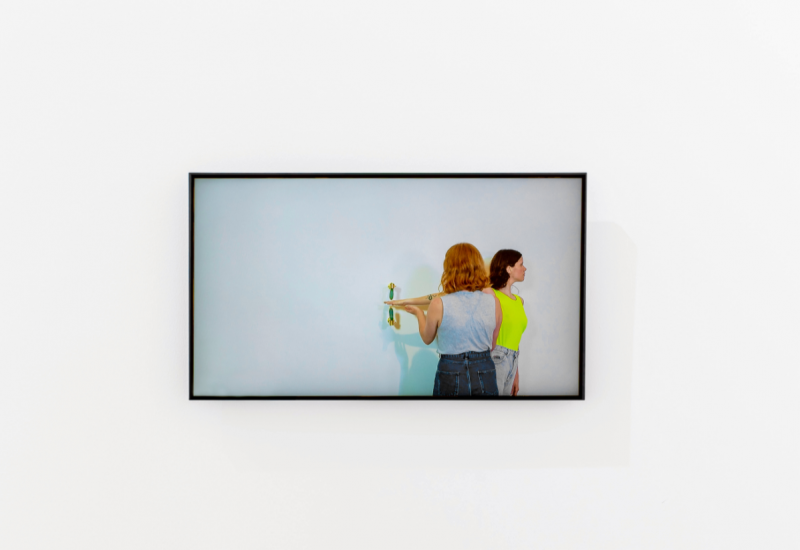
Installation at State of the arts, 2020, Bundeskunsthall, Bonn, Germany (photo courtesy of Bundeskunsthall)
Performers Rachell Bo Clark and Brogaard Camilla
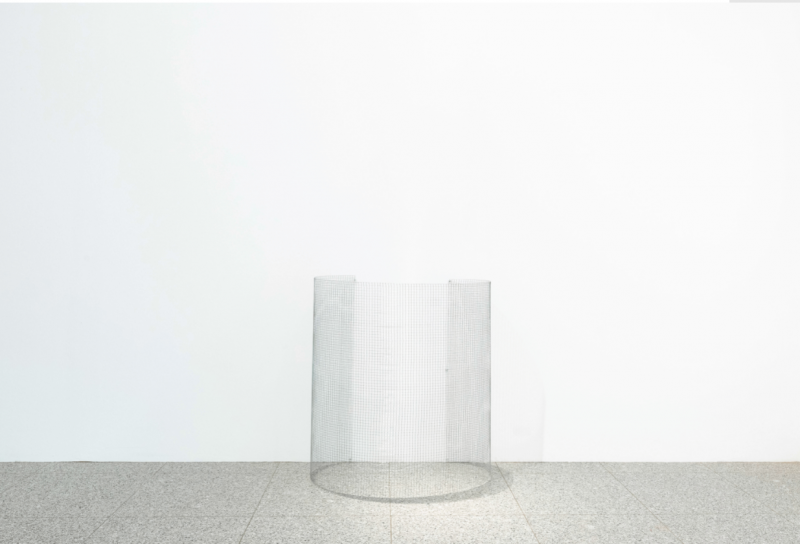
Installation at State of the arts, 2020, Bundeskunsthall, Bonn, Germany (photo courtesy of Bundeskunsthall)
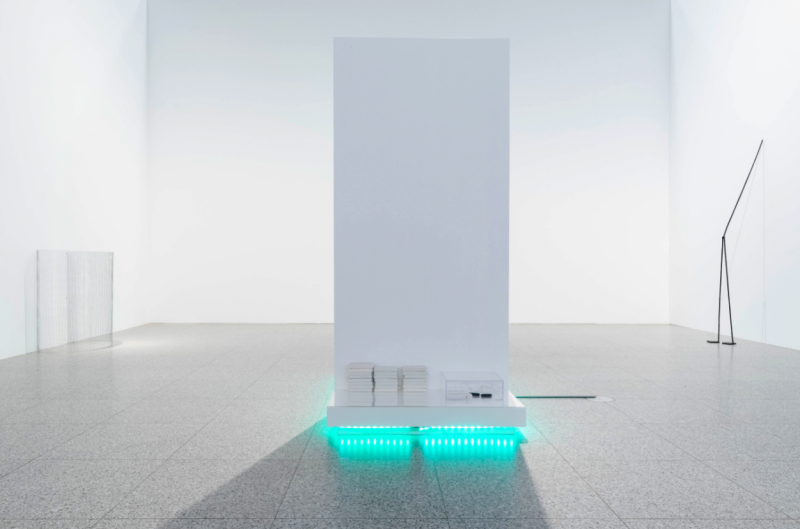
Installation at State of the arts, 2020, Bundeskunsthall, Bonn, Germany (photo courtesy of Bundeskunsthall)